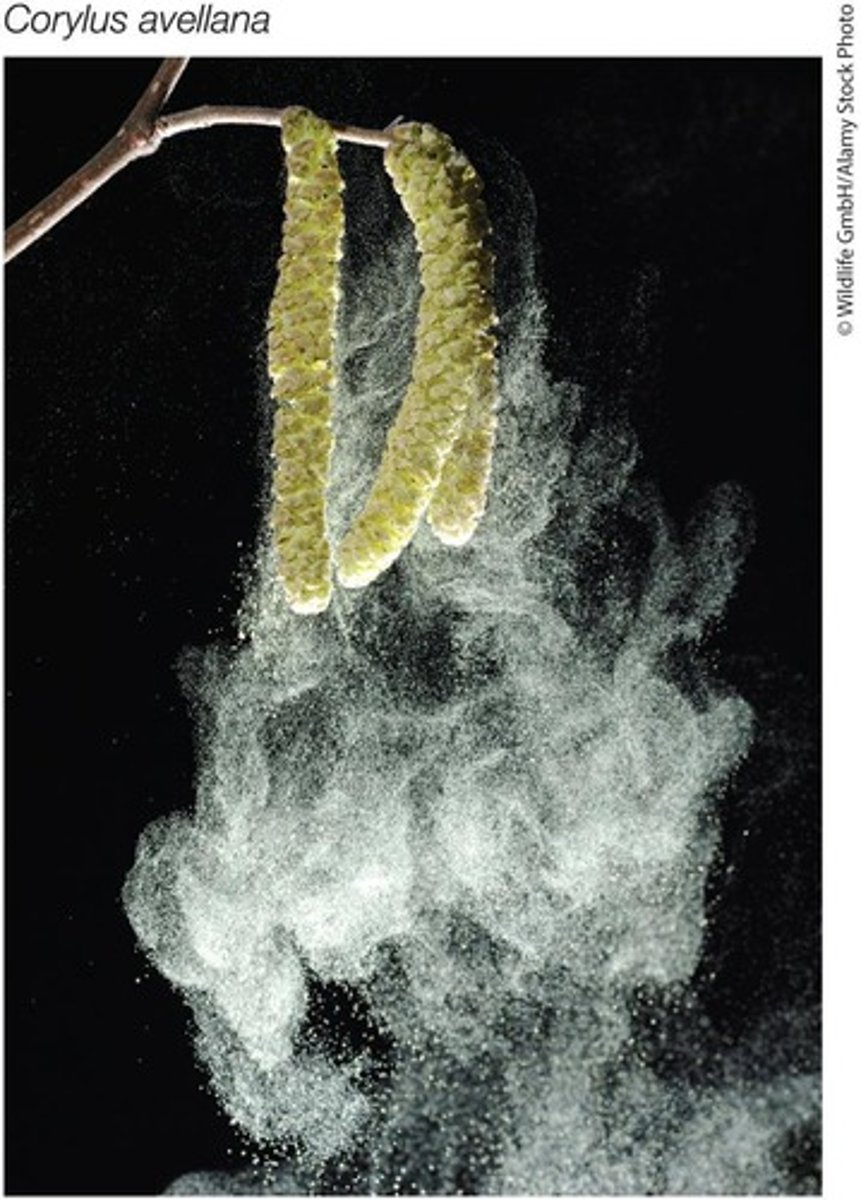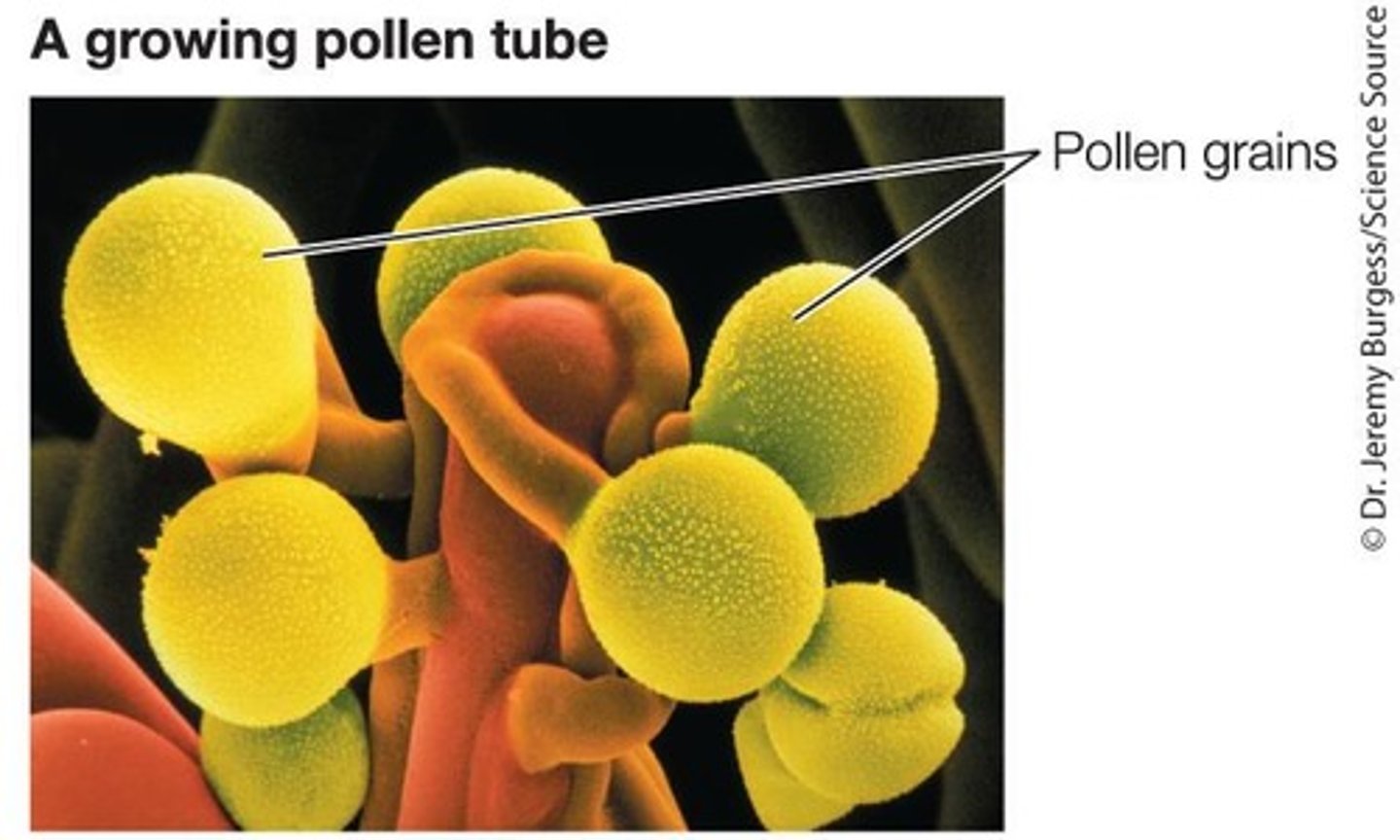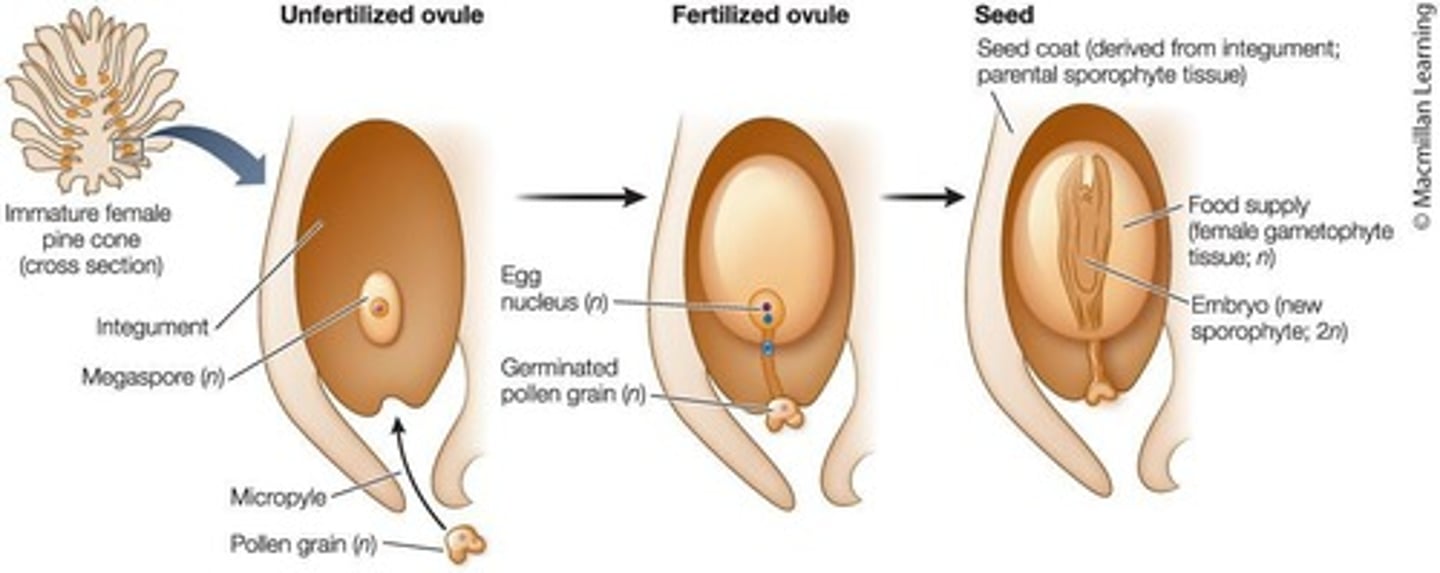Lecture 10: Chapter 27 - Seed Plants PT 1
1/44
There's no tags or description
Looks like no tags are added yet.
Name | Mastery | Learn | Test | Matching | Spaced |
|---|
No study sessions yet.
45 Terms
Progymnosperms
Seedless vascular plants now extinct that developed thickened woody stems in the Devonian.
Pollen
A means of sperm transfer that does not require water, allowing plants to colonize drier habitats.
Seeds
Structures that protect the dormant embryo until conditions are right for germination.
Woody seed ferns
The first seed plants that are now extinct.
Gymnosperms
A group of living seed plants that includes pines and cycads.
Angiosperms
A group of living seed plants known as flowering plants.
Heterosporous
A characteristic of seed plants that produce megaspores (female) and microspores (male).
Microspores
Spores that divide mitotically to produce the male gametophyte, or pollen grain.
Sporopollenin
The most resistant biological compound known, found in pollen grain walls, preventing dehydration and chemical damage.

Megaspores
Spores that develop into female gametophytes within the megasporangia and are not shed.
Ovule
The structure formed by the megasporangium and its protective integument, which develops into the seed.
Pollination
The process when a pollen grain lands near a female gametophyte.
Pollen tube
A structure that elongates and digests its way through the sporophyte tissue to the megagametophyte during fertilization.

Diploid zygote
The result of fertilization that divides mitotically to become an embryonic sporophyte.
Dormant stage
The phase when the embryo is suspended in growth, resulting in a multicellular seed.
Seed coat
The protective outer layer of a seed that develops from the integument of the diploid sporophyte parent.
Haploid female gametophytic tissue
Tissue that supplies nutrients for the developing embryo within the seed.
Embryo
The new diploid sporophyte generation within the seed.
Resting stages of seeds
Well-protected states that can remain dormant but viable for years.
Adaptations for dispersal
Features that many seeds have to facilitate their spread from the parent plant.
Secondary growth
The process that produced thickened woody stems in the earliest seed plants.
Wood
Also known as secondary xylem, it provides support and allows plants to grow above their competitors.
Genetic material maintenance
A benefit of pollen that allows for the preservation of genetic material over thousands of years.
Liquid water in fertilization
The elimination of this requirement due to pollen has allowed plants to colonize drier areas.
Cycads
A group of gymnosperms with 300 species, typically found in tropical regions.
Ginkgos
A group of gymnosperms represented by one living species, Ginkgo biloba.
Gnetophytes
A group of gymnosperms consisting of 90 species.
Conifers
A group of gymnosperms with 700 species, known as cone bearers.
Tracheids
Water conduction and support cells found in all living gymnosperms except gnetophytes.
Coastal Redwoods
The tallest gymnosperms, reaching over 100 m tall.
Bristlecone Pine
The oldest living organism on Earth, germinated about 5,000 years ago.
Megastrobilus
The female (seed-bearing) cone in conifers.
Microstrobilus
The smaller male (pollen-bearing) cone in conifers.
Micropyle
An opening in the integument through which a pollen grain enters.
Lodgepole Pine Cones
Cones that open only after exposure to fire to release seeds.
Arils
Fruitlike extensions of seeds found in some conifers, such as yews.
Environmental Conditions for Seed Germination
Seeds tend to germinate when conditions are favorable.
Fire-induced Seed Germination
A strategy that ensures adequate weather conditions for plant survival by delaying seed emergence until after a fire.
Seed Protection
Embryos are protected during unfavorable conditions and against herbivores.
Genetic Outcrossing
A process encouraged by certain reproductive strategies in plants.
Conifer Ovules
Typically born on the upper surfaces of cone scales, tightly pressed together for protection.
Pollen Grain Delivery
The function of the pollen tube is to elongate through sporophyte tissue allowing sperm to reach the female gametophyte.

Mesozoic Era
The period when gymnosperms were dominant, lasting until about 65 million years ago.
Competition Reduction by Fire
Fire produces new clearings that reduce competition for light.
Predator Clearance by Fire
Fire clears away potential predators of newly emerging seedlings.